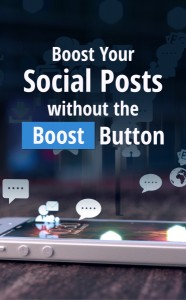Did you know that 3 quarters of high-potential employees say that they would be tempted to leave for their current organization on finding a better career opportunity or better use of their existing skills? Wait, there’s a way to hold on to them. Offer them the same choice within your organization.
The scenario is pretty much similar to what I encountered a few days ago. After losing my part-time job, it was getting hard for me to pay the monthly bill. I called their customer service department to negotiate and get a discount on my current deal. The sales agent understood that since my monthly bill is getting unaffordable for me, I might cancel the service altogether. They promptly offered me a deal to retain me as their customer.
The takeaway from this story is to give your people what they want if you wish to retain them!
Top Challenges in Internal Mobility
Each organization faces a different set of challenges with internal mobility of talent. Here are common challenges across various industries:
- The Manager Challenge
One of the top challenges is the unwillingness of HR managers to put forward the current employees for new opportunities. They believe that that external candidates will be better hires than internal candidates. That is a misconception. Such a mindset of the HR department could be restricting your existing employees to pursue career opportunities they deserve.
- The Employee Challenge
Challenges pertaining to talent mobility are often related to employee’s lack of career information. Even HR professionals say their employees don’t have visibility of potential career opportunities. In some cases, employees are not encouraged to look for new careers internally. Hence, they are not encouraged to be as engaged in their job. In other cases, they are tempted to look for career opportunities outside the organization.
- Strategic Alignment
Another dilemma organizations encounter is a lack of alignment of the mobility with the business strategy. Without a strategy in place, it is unlikely for leaders to support the internal mobility of talent, to begin with.
How Can AI Help?
Organizations, big or small, are struggling to find talent for their open positions. Through talent mobility, they can fill up the skill gap in a cost-effective way. At the same time, they would be satisfying the career progression aspiration of their employees. Research says that AI can help optimize this process.
AI technologies can overcome the mobility challenges that are holding an organization back. This technology can help the HR team find better skill matches, tap a larger pool of internal talent, improve employee visibility to career opportunities, and enhance employee experience.
AI can unleash the power of the people an organization already has in its team. Here are some ways it can refine the mobility of internal talent:
1: Making Mobility Better
AI presents HR recruiters with the opportunity to hand over the process of candidate selection to an algorithm. InterNations Business Solutions presented research highlighting the application of technology in mobility for bringing people and places together. By harnessing technology to move mobility into engagement and talent management, the process of mobility is refined. Assignees can focus on their new job and home life instead of performing stressful and mundane tasks.
2: Identify Top Talent
AI can assist the HR team process employee profiles by evaluating their skills, work experience, and achievements. It won’t just look at their rank. The system will undergo a performance analysis on all employees to measure their progress and assess their capabilities.
Your people are your greatest assets and with AI, you can unlock their hidden capacity. The most talented employees or the ones with career aspirations will be exposed to valuable opportunities.
3: Prompt Availability of Data
Common problem mobility teams have to face is the limited access to data. It’s time-consuming and tedious to gather vital information on employees. Then comes the responsibility of storing this data in a single location. AI automation can speed up this cumbersome process.
AI will collect valuable employee data and make it available and searchable for the talent mobility professionals. They will efficiently find out the status of each employee, their skillset, performance analytics, etc. in a matter of seconds.
4: Better Allocation of Resources
As organizations start unlocking the power of data, Artificial Intelligence and Machine Learning will help identify insights for predicting future issues. Let’s say your company is planning to transfer its sales VP into Canada from the US before the next fiscal year. This can take 4 to 6 weeks if your company has never moved an employee so quickly because of immigration constraints. If your company starts tapping into the power of AI, tasks like these will become more common than before.
5: The Use of Chatbots
Chatbots even in their basic form can be very useful. You can access information through text and voice interaction. Imagine asking Alexa about the status of a visa application. Over time, they will be able to answer complex situations and even take action. When that happens, the manual work in the process will remove.
6: Better Data Analytics
A key benefit of adopting AI in talent mobility is the growth in the volume of data available to an organization. With AI-powered conversational interface and data analytics techniques, complex processes like immigration and tax research will simplify. The tasks that took months will take days to complete.
Analytics can be used to identify an area in the business that is likely experiencing challenges such as low job movement, employee retention, etc. Then, a strategy to overcome these challenges could be developed.
7: Educate Employees about Career Opportunities
While AI can fulfill the organization’s hiring needs, it will help employees improve their career experience if it comes in alignment with the business strategy. The benefits include:
- Instilling values in the employees that encourage growth and movement across the organization
- Communicating open career opportunities
- Create managers with a growth mindset to encourage their teams to develop and move
- Establish processes that make move from one job to another job seamless
8: Fast Decision Making
Presently, most companies undergo lengthy and expensive processes to assess their existing employees. Anything that involves humans is at the risk of bias and error. When AI comes into action, it can expedite such processes. Decision-makers will have visibility on the skills, experience, and interests of employees. In turn, decision making will become fast.
9: Access the Viability of the Project
Offering international careers will always be an attractive way to retain top talent. But before talent mobility comes to the responsibility of assessing an assignment. A company must assess if the project at hand is truly in its interest. ROI will no longer be measured on the basis of an arbitrary set of measures. AI will assist in performing a true comparison against the needs of the company at the moment for the particular project and skills.
10: End Bad Hiring Practices
Every organization is somewhat guilty of bad hiring practices. After performance evaluation, you might discover a list of employees who are promoted for reasons beyond their talent and accomplishment. This is usually because of employee loyalty to managers or tenure. AI can help redefine the existing strategies and look at employees on the basis of merit. This will put bad hiring practices to an end.
The Future of Talent Mobility
AI solutions use data, natural language, and pattern recognition to gather insights into employees and their roles. It can offer better visibility of opportunities and match skills and jobs to create a personalized recommendation. The process will refresh automatically as new data becomes available. As employees are exposed to new opportunities, this would streamline the entire process of mobility.
Mobility at the end of the day is a people-intensive function. The modern workforce is geographically dispersed. It’s getting difficult for organizations to cater to the needs of all employees at once. AI will provide more accurate information, improve turnarounds and even automate some human tasks in the mobility department. This will streamline workflows and enable the mobility department to become agile along with improving the overall employee experience.
Business & Finance Articles on Business 2 Community
(108)
Report Post


